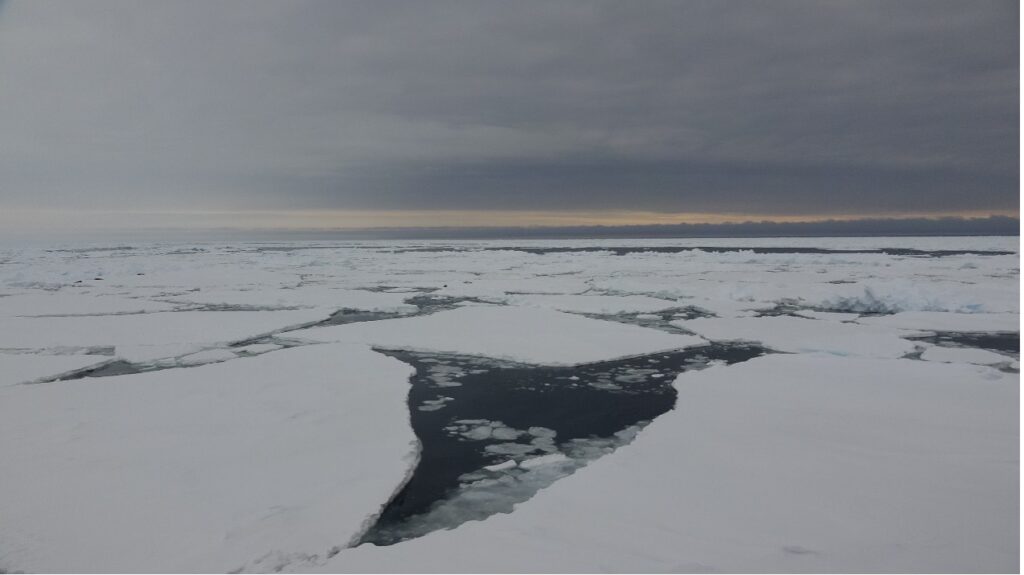
A collaborative team comprising researchers from China, the United States, and Europe has improved the performance of the Data Assimilation System for the Southern Ocean in assimilating sea-ice concentration (SIC) through optimizing model-dependent parameters.
Considering the significant uncertainties in certain aspects of Antarctic sea ice reanalyses resulting from assimilating SIC observations, along with gaps in current studies on sea ice data assimilation involving model-dependent parameters, Hao Luo, Qinghua Yang, and Dake Chen, affiliated with Sun Yat-sen University and Southern Marine Science and Engineering Guangdong Laboratory (Zhuhai), China; Matthew Mazloff from Scripps Institution of Oceanography, University of California, USA; and Lars Nerger from Alfred Wegener Institute, Helmholtz Centre for Polar and Marine Research, Germany, have undertaken further refinements to the model-dependent parameters of Data Assimilation System for the Southern Ocean (DASSO), a system built upon the Massachusetts Institute of Technology general circulation model (MITgcm) and the Parallel Data Assimilation Framework (PDAF). Their recent publication in Geophysical Research Letters details the outcomes of their research.
Qinghua Yang emphasizes, “Although recent studies have pointed out the presence of significant uncertainties in certain aspects of Antarctic sea ice reanalyses obtained from assimilating SIC, the wealth of historical SIC observations, coupled with their extensive spatial coverage, renders them indispensable for the reconstruction of long-term Antarctic sea ice variability”. Thus, whether SIC observations are maximally utilized in Antarctic sea ice assimilation remains an open question.”
Remarkably, while previous studies on ocean data assimilation have underscored the importance of optimizing model-dependent parameters for assimilating oceanic observations, the attention to this aspect in current sea ice data assimilation studies has been limited. Yang elaborates, “The question persists as to whether the calibration of model-dependent parameters in data assimilation can enhance the performance of assimilating Antarctic SIC. To address this gap, we firstly refined the model-dependent parameters of DASSO, including the development of a latitude-dependent localization scheme and the objective estimation of observation error variance of SIC accounting for both measurement errors and representation errors.”
To evaluate the impact of these optimizations on the assimilation of Antarctic SIC observations, the team conducted two sets of assimilation experiments spanning the period from 1979 to 2018. When compared with sea-ice extent derived from satellite data and sea-ice thickness derived from upward-looking sonar in the Weddell Sea, the experiment incorporating optimizations demonstrated superior performance, attributed to more reasonable error estimates. Furthermore, an investigation into the uncertainties of the sea-ice volume anomaly modeling underscored the significance of sea ice-ocean interaction in SIC assimilation. This implies the imperative need to assimilate a more extensive array of oceanic and sea-ice observations.
Hao Luo says, “Our results contribute to the more reasonable reconstruction of the long-term variability of Antarctic sea-ice, which benefits a better understanding of Antarctic sea-ice variability.”
To find out more about this work contact Qinghua Yang (Email: yangqh25@mail.sysu.edu.cn)
This Month’s Featured Publication
- Hao Luo, Qinghua Yang, Matthew Mazloff, Lars Nerger, Dake Chen (2023), The Impacts of Optimizing Model-Dependent Parameters on the Antarctic Sea Ice Data Assimilation, Geophysical Research Letters, doi: 10.1029/2023GL105690
Other New Publications last month
Dias, S. et al (2023), Analysis of tidal flows through the Strait of Gibraltar using Dynamic Mode Decomposition, arXiv: 2311.01377 [math.DS]
He, X. et al (2023), Numerical simulations and an updated parameterization of the breaking internal solitary wave over the continental shelf, Journal of Geophysical Research: Oceans, doi: 10.1029/2023JC019975
Ying He and Toshiyuki Hibiya (2023), The vertical structure of internal lee wave-driven benthic mixing hotspots, Journal of Physical Oceanography, doi: 10.1175/JPO-D-22-0268.1
Hillebrand, F.L. et al (2023), Concentration and thickness of sea ice in the Weddell Sea from SSM/I passive microwave radiometer data, Anais da Academia Brasileira de Ciências, doi: 10.1590/0001-3765202320230342
Kiefer, S. et al (2023), Fully time-dependent cloud formation from a non-equilibrium gas-phase in exoplanetary atmospheres, arXiv: 2311.03244 [astro-ph.EP]
Kumar, P. et al (2023), Marine heatwaves intensification, expansion and departure into the permanent state over the Tropical Indian Ocean: a Regional Earth System Model assessment, Dynamics of Atmospheres and Oceans, doi: 10.1016/j.dynatmoce.2023.101408
Lee, Y.-C., & Liu, W. (2023) The weakened Atlantic meridional overturning circulation diminishes recent Arctic sea ice loss Geophysical Research Letters, doi: 10.1029/2023GL105929
Li, J. et al (2023), Internal Lee Wave Generation from Geostrophic Flow in the Northwestern Pacific Ocean, Journal of Physical Oceanography, doi: 10.1175/JPO-D-23-0035.1
Marques, Olavo B. et al (2023), Observations of tidally driven turbulence over steep, small-scale topography embedded in the Tasman slope, Journal of Physical Oceanography, doi: 10.1175/JPO-D-23-0038.1
S. Sirviente et al (2023), Dynamics of Atmospheric-Driven Surface Currents on The Gulf of Cadiz Continental Shelf and its link with The Strait of Gibraltar and The Western Alboran Sea, Progress in Oceanography, doi: 10.1016/j.pocean.2023.103175
Sun, D., Li, F., Jing, Z. et al (2023), Frequent marine heatwaves hidden below the surface of the global ocean, Nat. Geosci. (2023), doi: 10.1038/s41561-023-01325-w
Tedesco, P.F. et al (2023), Spatiotemporal characteristics of the near-surface turbulent cascade at the submesoscale in the Drake Passage, Journal of Physical Oceanography, doi: 10.1175/JPO-D-23-0108.1
Pavel Perezhogin et al (2023), Implementation of a data-driven equation-discovery mesoscale parameterization into an ocean model, arXiv: 2311.02517 [physics.ao-ph]
Poinelli, M. (2023), Ocean Dynamics and Ice Fractures: Insights from Earth and Beyond, Doctoral Dissertations TU Delft
Schneider, A. D. et al (2023), Harnessing machine learning for accurate treatment of overlapping opacity species in GCMs, arXiv: 2311.00775 [astro-ph.EP]
Tsai, Chang-Min et al (2023), Global Chemical Transport on Hot Jupiters: Insights from 2D VULCAN photochemical model, arXiv: 2310.17751 [astro-ph.EP]
Yu, Lisan (2023), Connecting Subtropical Salinity Maxima to Tropical Salinity Minima: Synchronization between Ocean Dynamics and the Water Cycle, Progress in Oceanography, doi: 10.1016/j.pocean.2023.103172
Do you have news about research using MITgcm? We are looking for contributions to these pages. If you have an interesting MITgcm project (ocean, atmosphere, sea-ice, physics, biology or otherwise) that you want to tell people about, get in touch. To make a post, contact Helen
